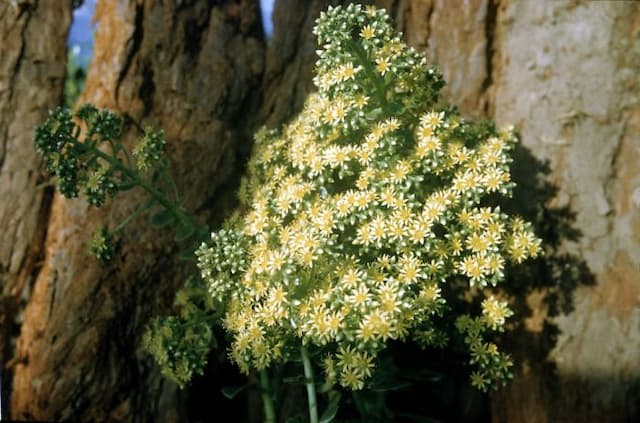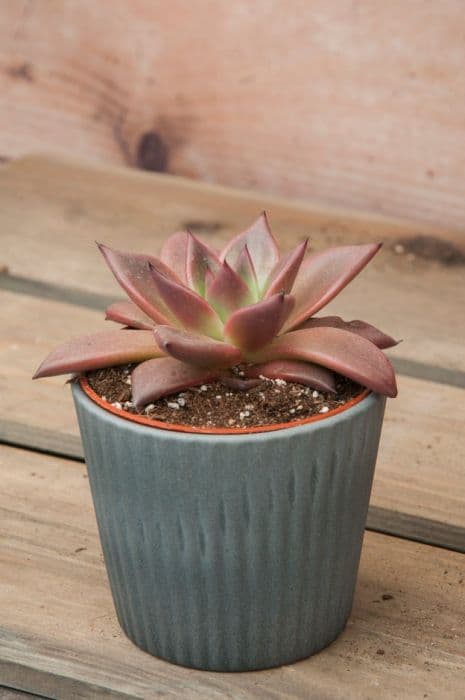Spotted adromischus Adromischus maculatus

ABOUT
A perennial succulent with a sparsely branched brown caudex. Inversely lance-shaped bright green leaves to 5cm (2in) long are often spotted or mottled with deep reddish-purple and often the leaves have horny margins. Spike-like cymes, 25-20cm (10-12in) long, of tubular green flowers 1.5cm (¾in) long with pinkish-white, or pale purple lobes, are borne in summer.
About this plant
 Names
NamesFamily
Crassulaceae.
Synonyms
Calico Hearts, Spotted Adromischus, Chocolate Drop.
Common names
Adromischus maculatus.
 Characteristics
CharacteristicsLife cycle
Perennials
Foliage type
Evergreen
Color of leaves
Varied
Height
6 inches (15 cm)
Spread
4 inches (10 cm)
Plant type
Succulent
Hardiness zones
10
Native area
South Africa
Benefits
 General Benefits
General Benefits- Low Maintenance: Adromischus maculatus, commonly known as Calico Hearts, requires minimal care, making it ideal for busy or novice gardeners.
- Drought Tolerant: As a succulent, Calico Hearts is well-adapted to dry climates, reducing the need for frequent watering.
- Suitable for Small Spaces: The compact size of Calico Hearts allows it to thrive in limited spaces such as apartments or small gardens.
- Attractive Foliage: The plant displays interesting spotted leaves that can add aesthetic appeal to any setting.
- Easy to Propagate: Calico Hearts can be easily propagated from leaf cuttings, allowing gardeners to expand their collection or share with others.
 Medical Properties
Medical PropertiesThis plant is not used for medical purposes.
 Air-purifying Qualities
Air-purifying QualitiesThis plant is not specifically known for air purifying qualities.
 Other Uses
Other Uses- Adromischus maculatus, commonly known as Calico Hearts, can be used as an educational tool for biology students to learn about CAM photosynthesis and succulent plant adaptations.
- The contrasting patterns on the leaves of Calico Hearts can inspire artists and designers for print and pattern design in textile, wallpaper, or other graphic applications.
- This plant can be given as a low-maintenance gift for office desks or homes, symbolizing affection and care with its heart-shaped leaves.
- Calico Hearts may be used in miniature gardens or fairy gardens to create enchanting landscapes owing their small size and unique appearance.
- As a character in storytelling or animation, the distinct look of the Calico Hearts could embody traits of resilience and beauty in harsh conditions.
- The intricate leaf patterns and textures can serve as inspiration for jewelry designers to develop nature-themed collections.
- Calico Hearts can be part of a therapy garden or sensory garden, offering a tactile experience due to their fleshy leaves and interesting textures.
- This plant can act as a live prop in photographic still life arrangements, adding an organic and textured element to the composition.
- Using Calico Hearts in a workshop on plant propagation can demonstrate the ease of propagating succulents from leaves or cuttings.
- Calico Hearts can be utilized in cultural studies classes to discuss the significance and symbolism of plants in different societies, such as representing love and endurance.
Interesting Facts
 Feng Shui
Feng ShuiThe Calico Hearts is not used in Feng Shui practice.
 Zodiac Sign Compitability
Zodiac Sign CompitabilityThe Calico Hearts is not used in astrology practice.
 Plant Symbolism
Plant Symbolism- Resilience: Adromischus maculatus, commonly known as Calico Hearts, is known for its ability to thrive in arid conditions, symbolizing the ability to endure and prosper even in difficult circumstances.
- Rarity: Due to their unique patterns and colors, Calico Hearts represent the beauty and value found in rare and uncommon traits.
- Adaptability: Calico Hearts have the capacity to adapt to various environments, signifying flexibility and the willingness to adjust to new situations.
- Independence: This plant doesn't require much water or care, symbolizing self-sufficiency and the importance of independence in one’s life.
 Water
WaterThe Calico Hearts should be watered sparingly, as it is a succulent that is prone to overwatering. During the active growing season in spring and summer, water when the soil has completely dried out, approximately once every two weeks, using about 4 ounces per watering for a small pot. In the dormant period of fall and winter, reduce watering to once a month or when the soil is dry to the touch.
 Light
LightCalico Hearts thrive best in bright, indirect light. A spot near an east or south-facing window where it can receive plenty of light without being exposed to harsh direct sunlight is ideal. Protect the plant from intense direct sun, which can scorch its leaves.
 Temperature
TemperatureCalico Hearts prefer a temperature range of between 50°F and 85°F. They can survive minimal temperature dips down to 40°F, but sustained exposure to cold can be harmful. Ideally, maintain a consistent temperature within their preferred range to ensure healthy growth.
 Pruning
PruningPruning Calico Hearts is mostly for removing dead or damaged leaves to maintain the plant's health and appearance. The best time to prune is in early spring before new growth begins. Pruning can be done as needed throughout the year, but always with a light hand to avoid over-pruning.
 Cleaning
CleaningAs needed
 Soil
SoilCalico Hearts thrive in well-draining soil with a pH around 6.0. A mix of cactus potting soil with added perlite or pumice (in a 1:1 ratio) provides the ideal environment. Regular garden soil is not suitable, as it retains too much moisture.
 Repotting
RepottingCalico Hearts should be repotted every 2-3 years or when it has outgrown its pot. Choose a slightly larger pot to give the roots space to grow, disturbing them as little as possible during the process.
 Humidity & Misting
Humidity & MistingCalico Hearts prefer low to moderate humidity levels and do well in typical indoor environments. They are tolerant of dry air but should be kept away from excessively humid areas.
 Suitable locations
Suitable locationsIndoor
Provide bright light with some direct sun; water when soil is dry.
Outdoor
Place in partial shade, protect from heavy rain and frost.
Hardiness zone
9-11 USDA
 Life cycle
Life cycleThe life cycle of Adromischus maculatus, commonly known as Calico Hearts, begins with germination, where seeds sprout in well-draining soil with warm temperatures and moderate moisture. The seedlings develop fleshy leaves and a shallow root system, characteristic of succulents, to store water and nutrients. As the plant matures, it enters a vegetative stage, during which it grows more leaves and may spread out if given space. In its reproductive phase, Calico Hearts may produce small, inconspicuous flowers, typically during the warmer months, if it receives adequate light. After pollination, seeds develop and are dispersed, completing the cycle. In the right conditions, Calico Hearts can live for several years, sometimes requiring division due to overcrowding.
 Propogation
PropogationPropogation time
Spring to Summer
Propogation: Adromischus maculatus, commonly known as the Calico Hearts, can be propagated primarily through leaf cuttings. The most popular method involves gently twisting a healthy leaf from the stem, ensuring a clean break. This leaf is then left to dry and callous for a few days, which usually takes about 2-3 days. Once the cut end has dried, the leaf is placed on top of well-draining soil and is misted lightly with water every few days to maintain slight moisture. Roots and new growth will generally begin to appear in a few weeks. Direct sunlight is to be avoided during this initial rooting period to prevent scorching, and the soil should never be waterlogged as it might cause the leaf to rot.









